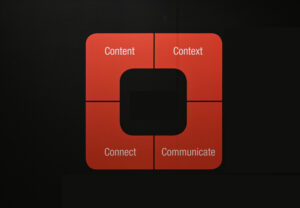Table of Contents
Communication is never a one-size-fits-all exercise. Effective communication is predicated on the need to understand the audience first and then craft the message. Not the other way round.
You may have read the School of Design Thinking’s blog titled ‘How to use Storytelling in Design Thinking’. Storytelling, among other interesting things, highlights the need to understand the listener before crafting the story and its message. Here is an interesting example of how effective messages are crafted based on what we call the ‘4Cs’ – Content, Context, Connect and Communicate.

This story that we are going to briefly look into, is one that happened in a South American country – Columbia. And it is the story of how an advertisement agency played a very effective role in demobilising guerrillas. Yes, you read it correctly. An advertisement agency actually helped the Columbian government in peacefully demobilising a large number of guerrillas. You may watch the TED talk by Jose Miguel Sokoloff here.
Content
The message to the Columbian guerrillas (FARC) was very clear. Do not use violence to address a problem. Lay down weapons and join the mainstream. While the message is very clear, one must first understand why young men (and women!) take up arms and fight against their own country. What must have pushed them to this option? When people are desperate, what are the factors that need to be considered?

The guerrilla issue is essentially a human problem. It requires a message that goes straight to the heart. So, as Jose states, what could be more welcoming than to recall the young men and women with guns back home?
Context
Every message requires a context for it to be effective. In this particular instance, the context was the Christmas season – a season that brings with it hope and a better future. Being a country that largely adheres to the Christian faith, this message of hope and peace was appropriately initiated around the Christmas season.
Columbia has another religion – Football. Sports are not only a rallying point for the young and old alike, but it is also a great social connector. With the Football World Cup happening (and Columbia’s good performance), Jose and his team found this event to be ideal for a rallying cry, “Drop your weapons. Come home. We have a seat reserved for you.”
To make this even more welcoming, the Columbian armed forces played a secondary role in spreading the message. The agency used influencers such as footballers, radio jockeys and others to welcome the guerrillas to the stadium.
Connect

Every great message needs a proper platform to effectively connect. As those were the days when the internet was still in its early years, television and radio played a great role. Also, the guerrillas were operating deep in the forest – largely away from urban settlements. Hence, reaching them was difficult and needed a different approach. Jose’s agency initially planned to use ‘Christmas trees’ along forest highways. However, they soon found out that the actual highways of the dense forest were rivers. Thus, they quickly adapted their modus operandi to leverage this new-found knowledge.

Communicate
Finally, when coming to the actual process of communication, the agency, to its advantage, leveraged the power of influencers. From the mothers and teachers of the guerrillas to the aforementioned sporting and entertainment celebrities, the agency leveraged the power of influence to reach to the heart of the guerrillas. The message from the mothers was found to be especially powerful “before you became a guerrilla, you were my child. Come home. I am waiting.’

All this translated to a lot of impact.
- Most importantly, the entire exercise translated to a large swath of guerrillas laying down their arms and rejoining the mainstream.
- This elaborate exercise brought to light innovative means of communicating.
- It strongly elaborated the fact that as every story is unique, so is the audience. It is important to understand the ‘Persona’ of the audience and talk to them in the way that would reach them and impact them.
Persona

Persona is a powerful Design Thinking tool. It is a tool that helps the Design Thinker to perceive the world from the perspective of the customer (here, the target audience). What does the person feel? What does he/she think? What is their background that moulds their way of thinking? What motivates them and what are their aspirations? Importantly, what are their fears, doubts and challenges? These give great insight into the person. This knowledge plays a pivotal role in drafting messages that greatly impact the intended recipient.
Conclusion
Communication is a critical aspect of Design Thinking. But to make this element effective, it is imperative to understand the persona of the recipient. This story of the Columbian Guerrillas is a great example of how communication can be made quantifiably effective by understanding the audience and using the 4Cs framework.

